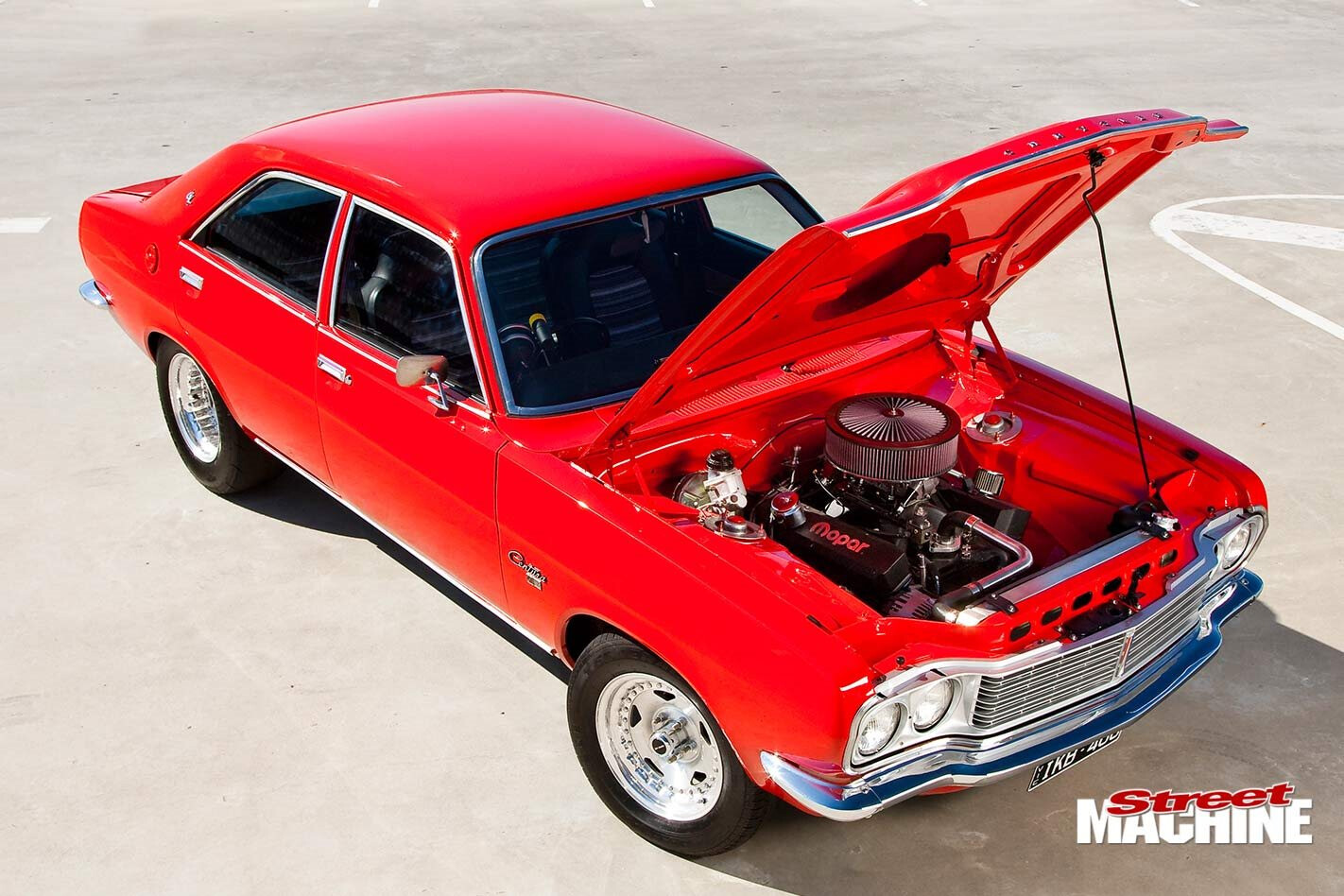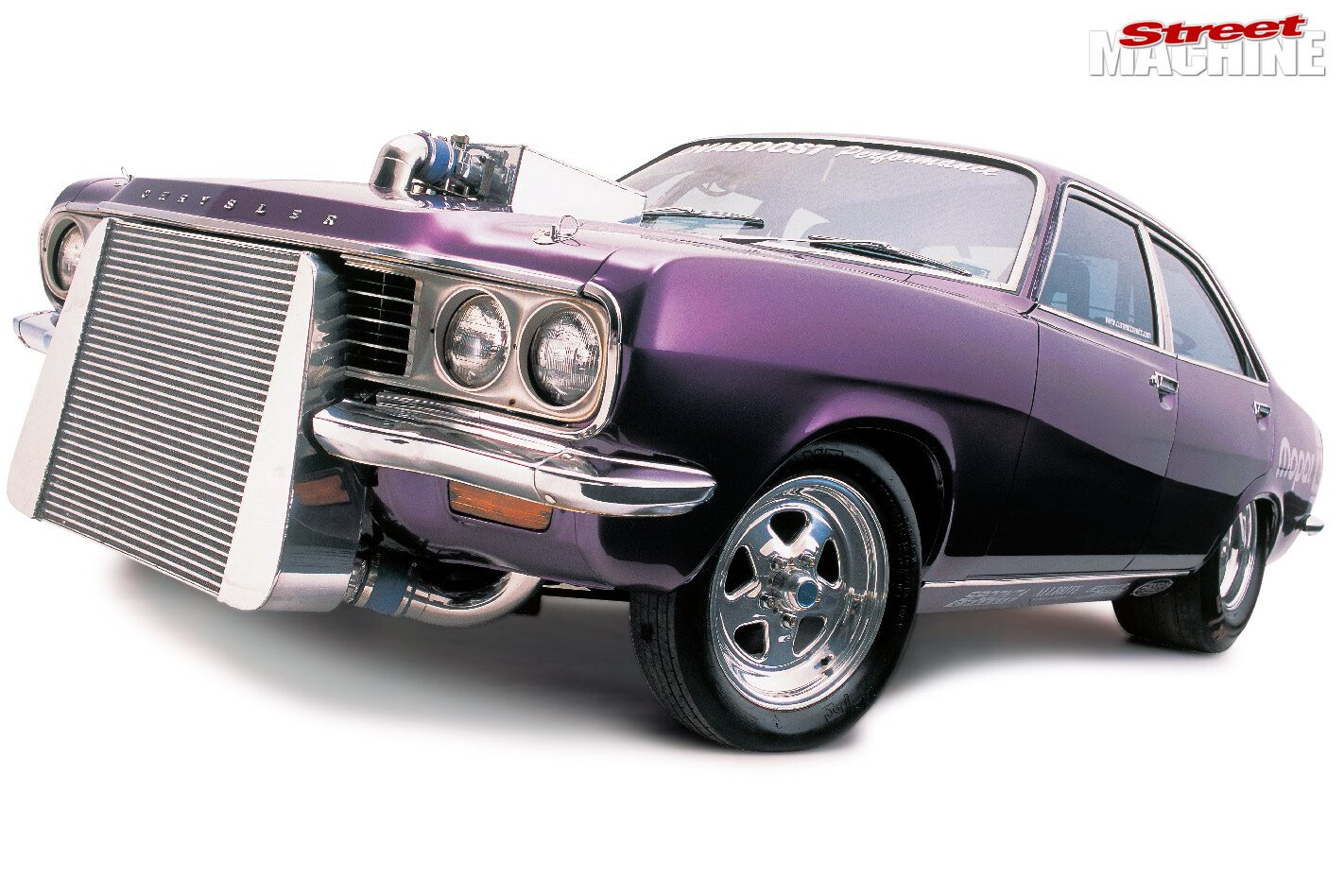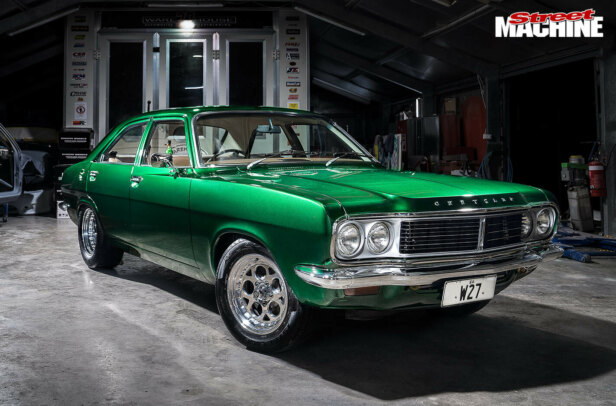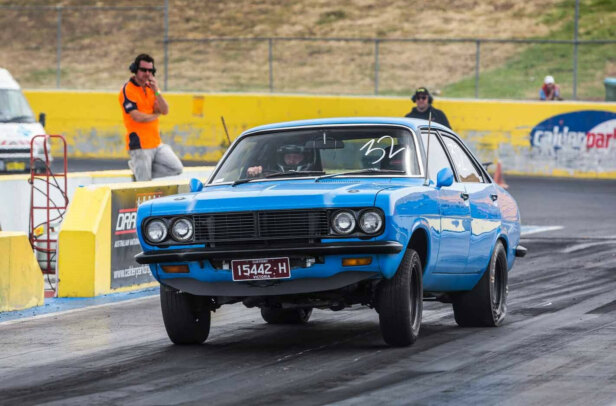WHAT would have been cooler than being a ‘Big Three’ engineer at the start of the 1970s? Seriously, it doesn’t get any better than grabbing a wheezy Euro or Pommy four-pot and giving it a healthy six-cylinder serving of Australia’s finest. The Cortina, Torana and Chrysler’s offering, the Centura, are all popular among the street machine crowd thanks to their cool styling, compact size, and awesome power-to-weight ratios.
This article was first published in the May 2014 issue of Street Machine
Chris Carter is one of the Mopar faithful who needs no convincing. He slid behind the wheel of a Centura while the laminate was still hot on his ‘P’ license.
“My older brother passed down a canary-yellow version for my first car,” Chris says. “It was running a Hemi six and five-speed combo, which was a lot of fun, but after a couple of years it was starting to get a little tired. It had some pretty major rust issues as well, so I decided to keep an eye out for a replacement.”
“There’s very little available for Centuras reproduction-wise, so it was a matter of finding the best lenses and trim and putting in the hours to restore them”
What Chris found was the holy grail of project car buying. “It was a two-owner Centura, with the first being an elderly lady who’d genuinely only used it for church on Sundays. In 30 years it had clocked up 23,000 kays and was completely original, which is what I loved about it. The second owner only had it for a short time, but thankfully kept it pristine.”
Chris was lucky to find a near-mint low mileage car as the basis for the project; a reverse-cowl scoop and wheels are the only deviations from
Picture a granny-spec Centura and it’s hard not to imagine mustard or poo-brown paint topped with a bone vinyl roof and brown interior, but Chris hit the jackpot, with the old dear ticking the red paint and black interior boxes way back in ’75. “Being a factory GL Sports Pack, the style and colour combination was a winner and came with rare cloth-insert seats; even the factory ‘Made in France’ interior light bulbs were in place, and still work to this day,” he laughs.
Form and function: mini-tubs house 255/50 tyres for street use and provide ample room for 28in-tall slicks at the drags. The neatly laid out fuel system and nitrous bottle are a sign of things to come
Chris punted the Centura around for seven years as a daily, swapping in a mild 265 and upgrading suspension along the way. “It went great and handled well, but I decided I needed more power. I was considering a turbo 265 initially, but instant neck-snapping power and naturally-aspirated reliability steered me towards an eight.”
Chris shelled out for an ex-motorhome 360 and 727 trans to get the build underway. With the help of good mate Michael Kavelj from MPR Automotive in Templestowe, Vic, work began in earnest, with the Centura stripped down and readied for a makeover. The plan was to keep it stock-looking with a stout engine combo, but the final product rolled out of Chris’s carport is far more of a weapon than initially envisaged.
Up front there’s a 557hp 408ci stroker and 727 trans. A custom alloy radiator makes it user-friendly, with the complete package nestled in an essentially stock, albeit smoothed, engine bay
Michael stretched the 360 out to 408 cubes via a Scat forged four-inch stroker crank, along with Eagle H-beam rods and Diamond forged pistons. Standard 360 heads are pretty ordinary, so they went with ported cast-iron RHS heads, topped by an M1 Mopar inlet manifold and Holley 950 HP Ultra carb. To seal the bottom end, Michael redesigned a Milodon sump, pick-up and windage tray so it wouldn’t smack into the Centura’s crossmember and rack-and-pinion. Michael kept the spanners turning for the transmission, kitting out the 727 Torqueflite with a reverse-pattern manual valve body, billet internals and a deep alloy pan. A heavy-duty, thick-wall custom tailshaft plays its part, while the rear end is a custom-length nine-inch, running Moser 31-spline axles, 4.11 gears and a Detroit Locker.
Thankfully a charmed life meant the Centura was in near-mint condition bodywise, only requiring a tiny amount of rust repair and the addition of a reverse-cowl scoop to prepare it for paint. Fabricated mini-tubs allow for ample tyre clearance, while chassis connectors help stiffen the monocoque bodyshell. The battery was also relocated and any surplus holes welded before laying on fresh coats of the original Vintage Red hue.
Australian Valiants are well catered for in the reproduction market, but Centuras have been all but forgotten, requiring Chris to go above and beyond to achieve the quality of finish he desired.
“I searched for parts across the country, and the globe, to find as many NOS pieces as possible, including shipping items from as far away as the Netherlands. I wanted to make the car look like brand new again and spent countless hours polishing the stainless, chrome and lenses, repainting badges and even modifying generic clips and fasteners to secure the trims.”
The interior is a rare Sports Pack option which, along with the woodgrain trim and sunburst steering shroud, screams 1970s cool. The only deviations from stock are a brace of aftermarket gauges and a B&M QuickSilver shifter
This dedication to detail continued inside, with Chris restoring the standard steering wheel and woodgrain trim. The Sports Pack interior was refurbished by Langford Motor Trimmers, who replicated the cloth inserts using NOS material sourced by Chris. The only real deviation from stock is a B&M QuickSilver shifter.
Standard front coils and struts were retained, while the rear was treated to a fabricated, adjustable four-link set-up located by QA1 coil-over shocks and a custom adjustable Panhard rod. Center Line Convo Pros were chosen for each corner in four- and 8.5-inch widths and running 165/80 and 255/50 tyres respectively.
Chris is extremely happy with the finished product. “I’m really proud of the car and how it drives,” he says. “It cruises fantastically on the street and performs flawlessly at the track. Considering we built it on jackstands in my carport and worked out of a small garden shed – fighting the rain and cold in winter and the searing heat in summer – it’s amazing what you can accomplish with perseverance and denial!
“With 557hp, it has about 150hp more than I was expecting, and after two outings has run an 11.3@124mph. With more tuning and track time I hope to see 11.0s naturally-aspirated, then I’ll fire up the NOS-plate system and see how it goes.”
And after that?
“It’s been a really blurry 18-month build, so I think I just need to sit back and enjoy it for a while. This car keeps me pretty busy, but I’d love to own a US Mopar one day.”
THE FRENCH CONNECTION
OFFERED as a competitor to Holden’s Torana and Ford’s Cortina, the Chrysler Centura – based on the flat-nosed Chrysler 180 built in France – hit the market in 1975. Chrysler Australia’s engineers stretched the Centura’s nose to accommodate the big Hemi six, which gave it a definite performance advantage over its six-cylinder competitors. They also offered a two-litre four-cylinder version that was quite zippy compared to other four-pot cars in its class.
It was only offered with 3.5- and 4.0-litre Hemi engines rather than the famous 265ci Hemi, but the 265 was a simple swap. In a straight line, a 265- powered Centura was an easy match for an SLR5000.
Handling wasn’t its strong suit though, with that big six putting a lot of weight over the nose, and they never sold in large numbers. Some figures suggest that less than 20,000 were bought, with the majority being KB models, but good examples, especially KC Centuras, are starting to bring decent money these days.
CHRIS CARTER
1975 CHRYSLER KB CENTURA
Colour: Vintage Red
ENGINE
Make: Chrysler 408ci
Carb: Holley 950 HP Ultra
Intake: Mopar M1
Heads: Cast RHS, ported
Crank: Scat forged 4in stroker
Rods: Eagle forged H-Beam
Pistons: Diamond forged flat-top, 11.5:1
Camshaft: MPR solid
Ignition: MSD digital 6AL, distributor, coil and leads
Cooling: Race Radiators custom aluminium, twin thermos
Exhaust: Custom 1⅞in four-into-ones, twin ceramic-coated 3in system with 2½in tailpipes
DRIVELINE
Gearbox: Chrysler 727 Torqueflite
Converter: TCE 4000 stall
Diff: 9in, 4.11 gears, Detroit Locker, Moser axles
UNDERNEATH
Front: Standard
Rear: Four-link
Shocks: Standard (f), QA1 adjustable (r)
Steering: Factory rack-and-pinion
Brakes: PBR twin-piston calipers with 300mm discs (f), 280mm discs (r)
WHEELS & TYRES
Rims: Center Line Convo Pro, 15×4 (f), 15×8.5 (r)
Rubber: 165/80 (f), 255/50 (r)
THANKS
My mate Mick Kavelj from MPR Automotive in Templestowe – I couldn’t have built this car without him; Adam for help sourcing parts internationally during
his wedding week!




Comments